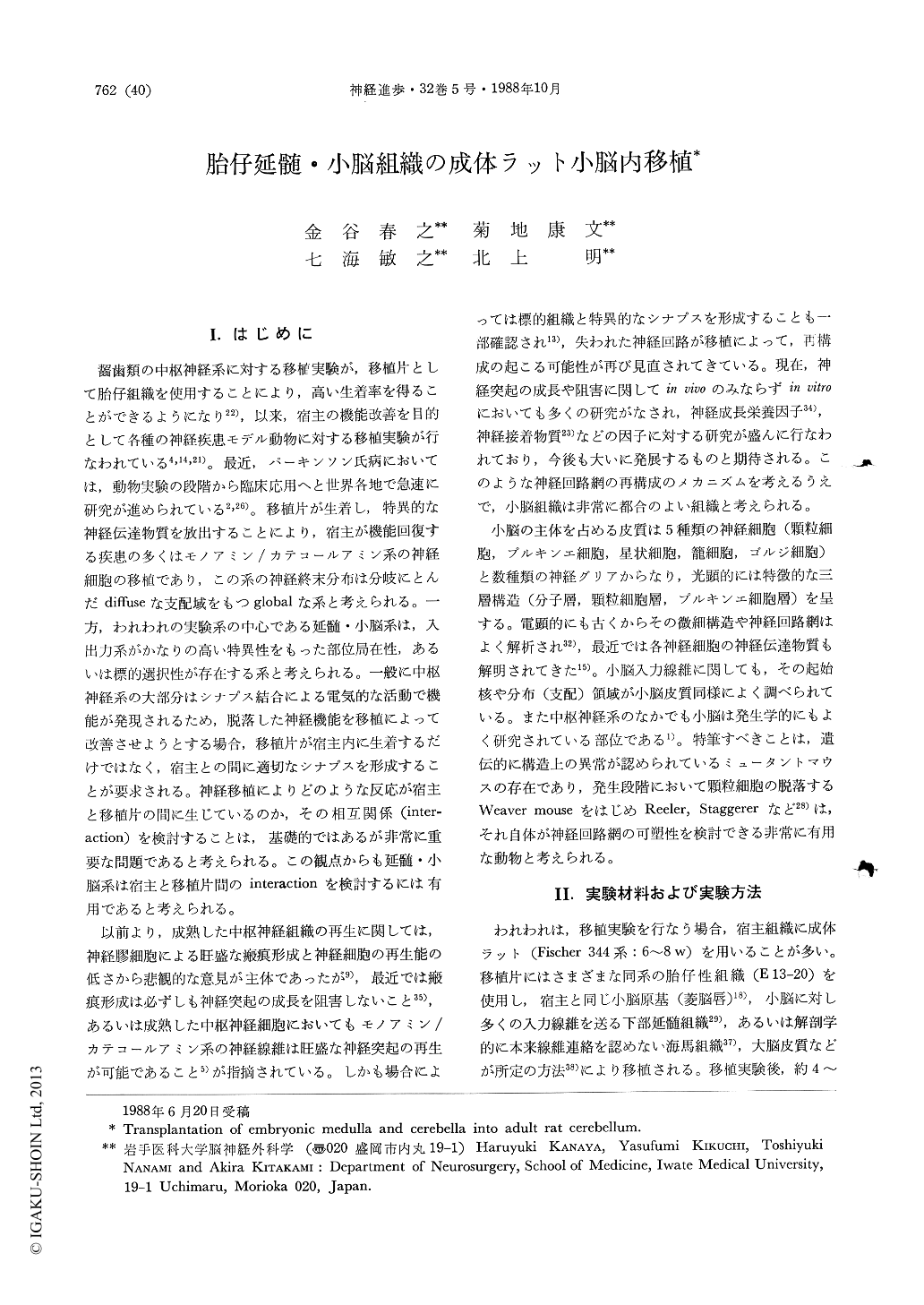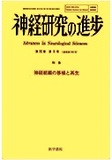Japanese
English
- 有料閲覧
- Abstract 文献概要
- 1ページ目 Look Inside
I.はじめに
齧歯類の中枢神経系に対する移植実験が,移植片として胎仔組織を使用することにより,高い生着率を得ることができるようになり22),以来,宿主の機能改善を目的として各種の神経疾患モデル動物に対する移植実験が行なわれている4,14,21)。最近,パーキンソン氏病においては,動物実験の段階から臨床応用へと世界各地で急速に研究が進められている2,26)。移植片が生着し,特異的な神経伝達物質を放出することにより,宿主が機能回復する疾患の多くはモノアミン/カテコールアミン系の神経細胞の移植であり,この系の神経終末分布は分岐にとんだdiffuseな支配域をもつglobalな系と考えられる。一方,われわれの実験系の中心である延髄・小脳系は,入出力系がかなりの高い特異性をもった部位局在性,あるいは標的選択性が存在する系と考えられる。一般に中枢神経系の大部分はシナプス結合による電気的な活動で機能が発現されるため,脱落した神経機能を移植によって改善させようとする場合,移植片が宿主内に生着するだけではなく,宿主との間に適切なシナプスを形成することが要求される。神経移植によりどのような反応が宿主と移植片の間に生じているのか,その相互関係(inter-action)を検討することは,基礎的ではあるが非常に重要な問題であると考えられる。この観点からも延髄・小脳系は宿主と移植片間のinteractionを検討するには有用であると考えられる。
以前より,成熟した中枢神経組織の再生に関しては,神経膠細胞による旺盛な瘢痕形成と神経細胞の再生能の低さから悲観的な意見が主体であったが9),最近では瘢痕形成は必ずしも神経突起の成長を阻害しないこと35),あるいは成熟した中枢神経細胞においてもモノアミン/カテコールアミン系の神経線維は旺盛な神経突起の再生が可能であること5)が指摘されている。しかも場合によっては標的組織と特異的なシナプスを形成することも一部確認され13),失われた神経回路が移植によって,再構成の起こる可能性が再び見直されてきている。現在,神経突起の成長や阻害に関してin vivoのみならずin vitroにおいても多くの研究がなされ,神経成長栄養因子34),神経接着物質23)などの因子に対する研究が盛んに行なわれており,今後も大いに発展するものと期待される。このような神経回路網の再構成のメカニズムを考えるうえで,小脳組織は非常に都合のよい組織と考えられる。
For obtaining fundamental data on the neural transplantation and the interaction between host and transplants some experiments using rats were performed. Pieces of developing medulla oblon-gata or cerebellar primordia were prepared from 13-20 day (E13 to E20) rat embryos and trans-planted to the cerebellum of 6-8 week old rats (Fischer 344). The host animals were maintained for 4 to 9 months after the transplantation. The cytoarchitectonic organization of the transplant were analysed by Nissl (Thionin) staining method, and silver impregnation method (Parmgren) using light microscope. The fine structure of the graft were also analysed using electron microscopy. In the transplantation of embryonic cerebella into adult rat cerebella, the donor tissue developed and differentiated to form folia with the trilaminar organization of the cerebellar cortex. Synaptic connections between neuronal elements in the graft showed basically the normal pattern. Thus, mossy terminals formed synaptic contacts with dendrites of granule cells, and axons of basket cells made synaptic contacts with somata of Purkinje cells. Many spines of Purkinje dendrites were contacted with parallel fibers, while others were surrounded by processes of astroglia.

Copyright © 1988, Igaku-Shoin Ltd. All rights reserved.


